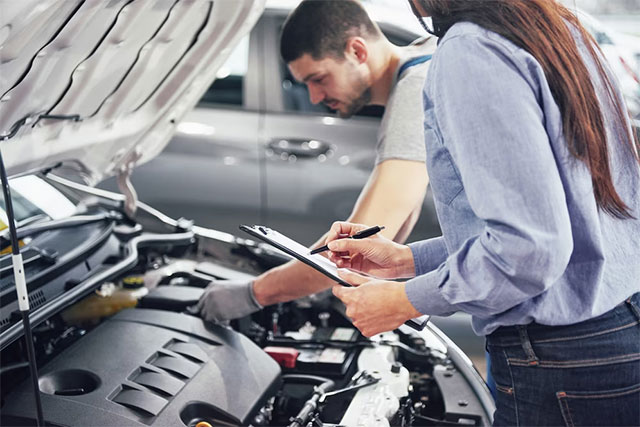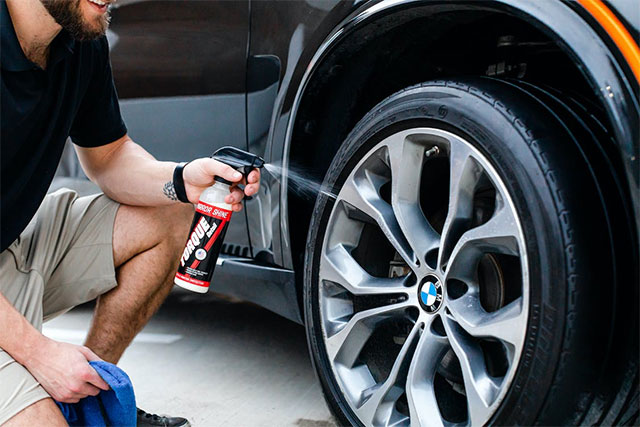No matter where you live or the type of weather you have all year, keeping your car safe should be at the top of your priority list. One of the best ways to achieve this is to follow your car’s suggested maintenance plan regularly, particularly during the cold winter months, as this may help you avoid unexpected issues.
Keeping up with regular maintenance also helps when it comes time to take your vehicle in for a state safety inspection.
Table of Contents
What Is a Vehicle Inspection?
A vehicle inspection is a systematic examination of the state of a motor vehicle to verify that it fulfills safety, emissions, and legal standards. Inspections are often performed by authorized agencies or experienced technicians and entail detailed examinations of numerous components such as brakes, lighting, tires, steering, and emissions control systems.
Any flaws or non-compliance concerns have been identified and must be fixed before the vehicle can run on public roads. Vehicle inspections differ by location and may be needed annually or at specified times, such as when transferring ownership or after an accident. The objective is to improve road safety, minimize environmental effects, and keep vehicles roadworthy.
Things You Should Check for a Vehicle Inspection
If you have to inspect your vehicle, you’ll want to ensure it passes. Here are things you should look into before going to the inspection station to increase your chances of passing:
Check Lights
Check all the lights and have someone wait outside while you switch on and off the headlights, turn signals, brake lights, and taillights. Check the high beams as well. If a light is out, replace it by purchasing a bulb from an auto parts shop or dealership and having it fitted at no cost. If assistance is not available, see the manual for instructions.
Get an Oil Change and a Tune-up
Emissions are also checked during your inspection, and if it has been a while since your last tune-up, now is an excellent time to have one. This will reduce your vehicle’s emissions and likely increase its performance and fuel efficiency.
Insurance and Registration
An inspection sticker can only be obtained with proof of insurance. Ensure your insurance card is current and, in your possession, before you go in for your inspection. Check that your registration is also valid. This may sound trivial, yet individuals often need help renewing their automobile registration.
Check Windshield
The windshield must be free of cracks and chips to pass inspection. Make sure you inspect your vehicle thoroughly before bringing it in. Contact your insurance company if there are any chips or cracks. Many firms provide free replacements, and the repair may be completed in the comfort of your own home or place of work.
Tires
Your windshield must be clear of cracks and chips to pass inspection. Make sure you inspect your vehicle thoroughly before bringing it in. Contact the insurance company if there are any chips or cracks for the NYS truck inspection. Many firms provide free replacements, and the repair may be completed in the comfort of your own home or place of work.
Seat Belts
Another thing that many people ignore is the functioning of your car’s seat belts. Before clearing you, an inspector will ensure they are easily accessible and functional; if you have a seat belt that slides under the seat or doesn’t clip securely, be sure to have it mended beforehand.
Steering and Alignment
The inspector will check the operation of your steering system. Often, worn-out components in your front end, like ball joints and shock absorbers, are to blame for a failure here. Ensure your steering is examined as part of your routine maintenance to prevent trouble during an inspection.
Benefits of Vehicle Inspection
There are several ways that enough and frequent vehicle inspections might contribute to your company’s success.
- Saving money on gas. Daily pre-use vehicle inspections can identify fuel consumption concerns, leading to increased vehicle expenditures. Recognizing these difficulties might assist in maintaining peak performance.
- Keeping low insurance prices. Faulty vehicles pose a risk to drivers, resulting in major injuries or deaths. Businesses should do daily pre-use safety checks to prevent workplace mishaps, cut injury rates, and avoid higher premiums.
- Increasing the lifespan of your vehicles. Regularly maintained and inspected vehicles survive longer, lowering maintenance costs and increasing value, ensuring a longer lifetime.
- Preventative maintenance. Preventative maintenance prevents minor issues from escalating into major ones, reducing downtime and assuring vehicle service. It prevents costly repairs and optimizes vehicle capabilities while minimizing downtime.
- Limiting your liability exposure. The law mandates companies to pre-inspect cars before use, avoiding fines and ensuring a pre-use record in case of accidents, reducing liability, and protecting businesses from non-compliance penalties.
- Increased customer satisfaction. A company’s image is enhanced by providing reliable vehicles, prompt services, and happy experiences. Displaying faultless vehicles with corporate logos and indirectly boosting revenue through offline promotion.
Conclusion
Before leaving, clean both the inside and outside of the vehicle.
It is not only a matter of cleanliness and decency, but it will also simplify the technician’s job. Not to mention that it will make a better impression overall.
Also, plan frequent checks and adhere to your vehicle’s maintenance schedule.
As a result, the vehicle inspection will be more of a formality rather than a serious and urgent responsibility requiring expensive repairs.
Take good care of your vehicle and do it on time, and the vehicle inspection or MOT will go well.














